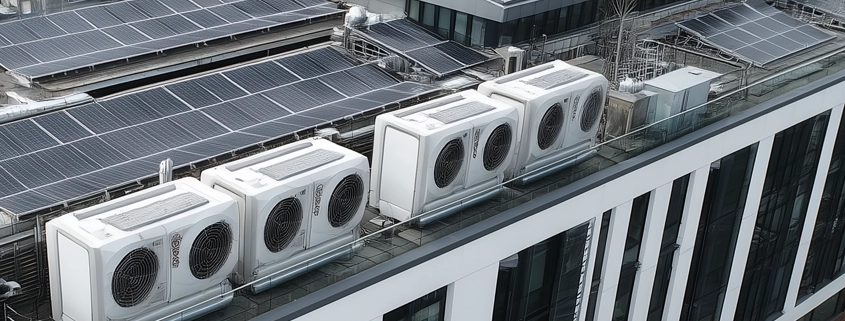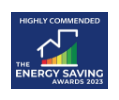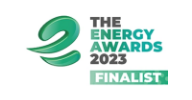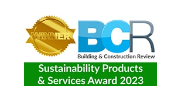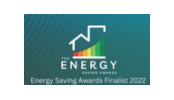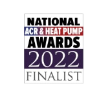Designing a successful hot water system today necessitates a nuanced approach, carefully balancing adherence to stringent building legislation, paramount safety considerations and economic viability. In addition, there is also the growing imperative of environmental sustainability, which has not only emerged as a key driver in the optimisation of commercial hot water systems, but has started to supersede both cost optimisation and, what should be non-negotiable, safety.
In recent years, the water heating industry has seen immense change as new technologies have sought to improve efficiency, reduce energy demands and decarbonise building emissions. Such technology will often move faster than legislation, creating new design challenges and concerns. In the aftermath of the Grenfell Tower fire, new requirements for the protection of higher risk buildings (HRBs) were introduced in the Building Safety Act 2022, and work continues to extend tighter legislation to other classes of buildings. From the perspective of safety, ultimate responsibility sits with the design and specification of a building and its systems, though many will still look to the poor execution of installation. Despite this, we are still seeing specifications and installation of systems that raise concerns over safety. This is particularly the case at the moment due to the focus placed on the use of heat pumps and solar by the government, seeking to adhere to Net Zero goals.
The issue with heat pumps, especially for hot water generation, is that they were conceived as a low-temperature technology, perfect for domestic heating, but less so for commercial DHW, where high temperatures are required to prevent legionella, a key safety concern for water heating. This has led to the development of refrigerants which are both lower in global warming potential (GWP) and able to generate higher temperatures, in excess of the necessary 65°C working temperatures. Currently, the most popular option for such units is R290, due to its extremely low Global Warming Potential (GWP) of 3 and zero Ozone Depletion Potential (ODP), making it an environmentally friendly alternative to traditional refrigerants. However, its primary drawback and a significant concern for widespread adoption is its high flammability, as R290 is propane.
In the event of a leak, if the concentration of R290 in the air reaches its lower flammable limit (LFL) – approximately 2.1% by volume – and an ignition source (like a spark or open flame) is present, there is a risk of fire or explosion. Propane is heavier than air, so leaked gas tends to accumulate at ground level or in low-lying areas, increasing the potential for dangerous concentrations in confined spaces or poorly ventilated areas.
To mitigate these risks, stringent safety measures and regulations are crucial. Installation and maintenance of R290 heat pumps must be carried out only by highly trained and certified professionals who understand the specific handling requirements of flammable refrigerants. This includes adhering to strict protective zones around the outdoor unit, which must be free from ignition sources, building openings (like windows and doors), and potential underground spaces where gas could collect.
Heat pump manufacturers do incorporate various safety features into R290 systems, such as minimal refrigerant charge, sealed circuits, leak detection sensors, and explosion-proof components. However, human error during installation, inadequate ventilation, or accidental damage to the system can still lead to a hazardous situation. From our own experiences of supplying water heating appliances and heat pumps, we know they get damaged in transit, when stored on site and during movement for installation. So leaks are going to happen, but what does that mean?
While unlikely, catastrophic pipe or component failure could lead to a rapid release of the entire charge. More commonly, small, gradual leaks might occur over time. The danger arises if such leaks accumulate in an enclosed or poorly ventilated space, reaching the flammable concentration range. ASHPs are most likely to be externally installed, where natural ventilation helps to rapidly disperse any leaks, often preventing them from reaching flammable concentrations. So, leaks are less likely to find the necessary mix of air (within the 2.1% to 9.5% concentration range) to become explosive. However, being denser than air (vapour density ~1.6 compared to air’s 1), R290 will tend to sink and accumulate in low-lying areas, depressions, or confined spaces around the unit. This pooling increases the likelihood of reaching a flammable concentration, particularly if enclosed or ventilation is poor – courtyards, or areas with high walls, roofs with parapets and proximity of the ASHP to windows, doors, air intakes, or drainage points offer potential areas where propane could pool and, at around 4% concentration in air, create a significant explosion hazard with the right source of ignition.
R290 has a relatively high auto-ignition temperature of around 470°C, so general hot surfaces are less of a concern, but electrical sparks from components, static discharge, and open flames will provide necessary ignition when fuel (R290) and air are present in necessary levels.
To mitigate this risk, domestic R290 ASHPs are typically designed with very small refrigerant charges, but the latest generation of commercial models are far larger, with recent models ranging up to 450 kW. The propane charge is also greater and can be anywhere from 4 to 50+ kilos.
Liquid propane will produce a very large volume of gas once it vaporises. Approximately 1 kg of liquid propane produces about 0.54 cubic meters of gas. So, 50 kg would produce 23 m³ of propane gas, creating a significant explosion, but even at 4 kg, the potential explosive volume of gas is 2.16m³, exceeding current recommendations to separate units by at least 1m.
The concern is that should a unit leak, the concentration of appliances, whether new or older heat pump units, or neighbouring HVAC and solar systems, could easily supply the necessary source for ignition. Consider installations on the sides of buildings, for example, where leaks would drop down beyond set ‘safe’ distances onto other units. The fear is that it could lead to a ‘daisy chain’ effect, igniting other units in series. Given the demand for roof space, this raises a host of questions about how system design should and must progress to ensure safe operation.
Of particular concern is the proximity of R290 heat pumps and solar photovoltaic (PV) systems. While the combination of R290 heat pumps and solar PV offers significant environmental and efficiency benefits for commercial buildings, the safety concerns related to shared roof space demand meticulous planning, design, and execution to mitigate the risks associated with R290’s flammability and the electrical nature of solar PV.
Solar PV systems operate with direct current (DC), which can produce sustained electrical arcs in the event of damaged wiring or faulty connections. These arcs are powerful ignition sources. Inverters, combiner boxes, and other electrical components of the solar PV system are also inherent ignition risks.
PV systems do catch fire, but it’s challenging to provide an exact, definitive number of fires in commercial buildings specifically attributed to solar PV installations. However, available data and reports offer insights into the trends and causes. If we focus on the UK, where some studies have been conducted, the incidence of fires involving solar PV systems is statistically very low, especially when considering the significant growth in installed capacity. However, as the number of installations increases, so does the absolute number of incidents.
Between 2010 and 2022, the UK’s Incident Recording System (IRS) recorded 325 fires that included a reference to solar PV. It’s important to note that these figures may include instances where solar panels were present on site, but the fire originated elsewhere. According to a 2017 BRE (Building Research Establishment) report, 26 of 58 incidents of PV fires occurred in commercial properties. More recent reports indicate a significant increase. There were 66 fires related to solar panels between January and July 2023 alone, in the UK, compared to 63 fires for the whole of 2019. This suggests a six-fold increase in solar panel fires over the last ten years.
There were a variety of attributable causes, including frequently cited DC isolators and DC connectors as common points of failure leading to fires, accounting for over two-thirds of equipment faults. As systems age, the risk of failure and fire from components (like inverters) can increase. Poor installation practices are a significant contributing factor, with some reports suggesting that as much as 36% of incidents were attributable to this. This highlights the importance of using accredited and competent installers. Faulty products, design issues, and external influences like moisture ingress, bird damage, or extreme weather can also play a role.
So, what is the answer?
Greater legislation for commercial-grade appliances is required, especially in relation to the safe transport, storage and installation of pre-charged (i.e. monobloc design) ASHPs.
Stricter specification of ‘protective zones’ or ‘safety zones’ around the units is required. These zones must be free from any building openings (windows, doors, ventilation inlets/outlets) and potential ignition sources. This is especially the case when approaching layouts that incorporate R290 heat pumps and solar PV arrays. Panels, mounting structures, and associated electrical equipment need to be kept a safe distance away from the heat pump units.
Safety zones for R290 should also exclude any depressions or underground spaces where the heavier-than-air gas could accumulate. This is crucial for flat commercial roofs that might have minor dips or service access points.
For those designing systems, a comprehensive risk assessment is essential for any commercial roof installation combining R290 heat pumps and solar PV. This assessment must consider potential leak scenarios, dispersion patterns, ignition sources, and emergency response.
While the overall statistical risk of a fire directly caused by a R290 or solar PV installation remains low, incidents do occur, and their number is expected to increase as the technologies gain more widespread adoption. The concern is that untried combinations of technologies could have serious implications for the safety of those using commercial buildings, maintaining building services, and ultimately responding to emergencies related to the technology in question.
So, is there a better way?
For the provision of domestic hot water to commercial buildings, the simple answer is yes. All refrigerants, whether R290, PFAS or R32, have their issues. Currently, R32-based ASHPs offer a more compact, lower-cost and safe means to generate necessary temperatures for commercial applications. At Adveco, our recommendation is to retain R32 ASHPs as a source of preheat to a DHW application, providing greater versatility and assured service for lower investment and operational costs. The approach also considerably simplifies installation and demands for space. Primary heat for top up and peak demands can then be supplied with either a gas water heater or an electric boiler for greater carbon reduction.
For solar preheat, Adveco recommends the deployment of solar thermal as opposed to solar PV, especially for gas replacement in existing buildings. Specifications will often aim to deploy solar photovoltaics (PV) to supply electricity for space heating and water. PV will always offset grid electricity at 136g/KWh, equivalent to 18 kg of CO₂/m²/annum. Compare this to solar thermal, which offsets gas emissions at 233g/kWh, or 148 kg of CO₂/m²/annum. This makes solar thermal eight times more effective per m² than PV when addressing carbon emissions from water heating, translating to a smaller panel area for solar thermal on the rooftop.
We would always advocate splitting solar water heating (solar thermal) from solar space heating (PV) to gain the greatest efficiencies. A typical office may require, as a rule of thumb, one solar thermal collector per 100 litres of thermal storage capacity. Most commercial-grade applications will typically require six to 20 solar collector panels. These collectors and the gravity-fed system used in Adveco solar thermal applications are also intrinsically safe, so there are no points of ignition.
This hybrid approach, mixing R32 heat pumps, solar thermal and preferably electric boilers in an indirect system, optimises energy demands and ensures robust provision of daily hot water, which also meets sustainability goals. It also maximises the use of space for services and lowers upfront and ongoing operational costs.

